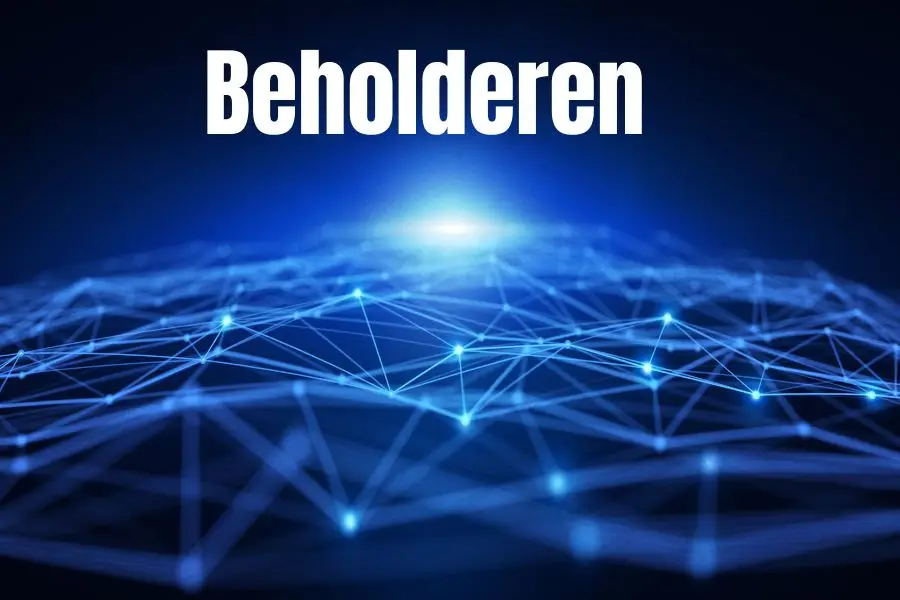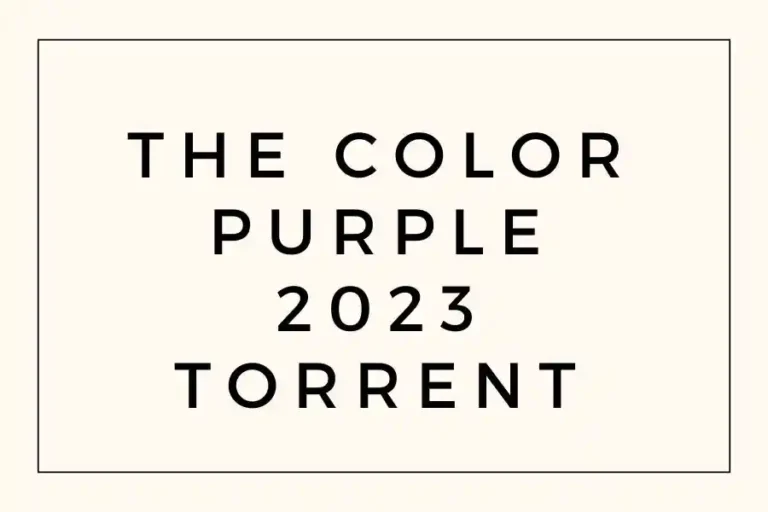Exploring Beholderen: The Evolution of Digital Transparency and Decentralization

Beholderen is a special idea in the big world of the internet that mixes cool digital technology with a focus on transparency. It started as a small idea and has grown into something that many people are excited about. This article will help you understand what Beholderen is, how it works, and why it’s important.
The Beginning and Growth of Beholderen
To understand Beholderen, we need to look at where it started. The word Beholderen first showed up in the early 2010s in small online groups. These groups liked to talk about new and different technologies. At first, only a few tech fans and pioneers talked about Beholderen. It was just a small idea, whispered among a few people who found it interesting.
As time went on, the idea of Beholderen started to change and grow. It became more than just a vague thought. Different people started to think about it in their ways, adding new ideas to it. This growth wasn’t straightforward; it branched out in many directions. Each new idea made Beholderen more complex and harder to understand.
One big moment for Beholderen was when blockchain technology became popular. Blockchain is a way to keep digital records safe and transparent without a central authority. Many fans of Beholderen saw this as a way to make some of their ideas real. The idea of a digital world where users are in control and everything is transparent fits well with Beholderen. This led to a lot more interest and experimentation with Beholderen in the digital world.
The Technology Behind Beholderen
Beholderen is built on a mix of different technologies. These technologies work together to create the Beholderen system. Here are some of the key technologies that make up Beholderen:
Distributed Ledger Technology (DLT)
Beholderen projects often use Distributed Ledger Technology (DLT), which works like blockchain. Imagine a big book where everyone can write down things, but nobody can erase or change what’s written.
This book is shared with everyone involved, and no single person has control over it. This helps keep things transparent and honest. Every time something new is added, everyone sees it at the same time, making it very hard for anyone to cheat or alter the information.
Advanced Cryptography
Beholderen uses advanced cryptography to keep your personal information safe. Think of it as a super-secure lock on your diary. This special lock uses codes that only you and the people you trust can understand.
Techniques like zero-knowledge proofs and encryption make sure that no one can peek at your private information or steal it. Even if someone tries to hack into the system, they won’t be able to read or change your data because of these strong protections.
Peer-to-Peer Networking
Beholderen works using a peer-to-peer network, which means that instead of relying on one central computer or server, all users are connected directly to each other. Imagine a classroom where, instead of passing notes through a teacher, everyone shares notes directly with each other. This setup makes the network more robust and less likely to be shut down or censored because it doesn’t depend on a single point of control.
Smart Contracts
Beholderen uses smart contracts to make agreements automatically without needing an intermediary. Think of these smart contracts as robot helpers that automatically do what they’re programmed to do when certain conditions are met.
For example, suppose you agree to pay someone for a service. In that case, the smart contract can handle the payment by itself when the service is delivered, ensuring that everything happens smoothly and fairly without human intervention.
Artificial Intelligence and Machine Learning
Some Beholderen systems use Artificial Intelligence (AI) and Machine Learning (ML) to make smarter decisions and offer better user experiences. Imagine having a super-smart assistant that learns what you like and helps you find things you enjoy. AI and ML work by analyzing lots of data to understand patterns and preferences, making the system more helpful and tailored to your needs.
These technologies work together to make Beholderen a strong and flexible system. But it’s important to remember that not all Beholderen projects use the same technologies in the same way. Each project might have its own unique approach to using these tools.
The Ideas Behind Beholderen
Beholderen isn’t just about technology. It’s also based on a set of ideas that guide how it’s built and used. These ideas show a vision of a digital world that’s fairer, more transparent, and more centered on users. Here are the main ideas behind Beholderen:
Decentralization
Beholderen believes that power should not be held by just a few big companies or groups. Instead, it should be spread out so that everyone has a say. This means that everyone can help make decisions and share their ideas.
It’s like a group project where everyone gets to contribute, and no one person has all the control. By sharing power, Beholderen aims to ensure that the system is fair and that everyone has a chance to participate in how things are run.
Privacy and Data Control
Beholderen thinks people should be able to decide what happens with their own information. This means that you get to choose what details about yourself you want to share, who you share them with, and under what conditions.
Imagine if you had a diary and you could decide who could read it and when. Beholderen wants to give you that kind of control over your data so you can feel safe and secure about your personal information.
Transparency and Accountability
Beholderen supports being open about how things work and how decisions are made. This means that even while keeping your personal information private, the system is clear about its processes. It’s like having a rulebook that everyone can see. This openness helps build trust because you can check how things are being done and make sure everything is fair while still keeping your details private.
Community Governance
In many Beholderen projects, the users get to help decide how the system should develop. It’s like being part of a club where everyone gets to vote on what activities to do next. By involving users in decision-making, Beholderen ensures that the system evolves in a way that meets everyone’s needs and preferences rather than just following orders from a few people at the top.
Interoperability and Open Standards
Beholderen supports creating open standards so that different systems can work well together. This means making sure that different technologies and platforms can easily communicate and share information. Think of it like different devices being able to use the same charger. By promoting open standards, Beholderen helps ensure that everything can connect smoothly and that users have a better experience with technology.
These ideas have attracted a wide range of supporters, including privacy advocates, digital rights activists, entrepreneurs, and technologists. They all share an interest in building more fair and equitable digital systems.
Real-World Uses of Beholderen
Even though Beholderen is still mostly a theoretical idea, some real-world applications have started to emerge. These examples show how Beholderen could be used in different ways:
Decentralized Identity Systems
Imagine if you could control your online identity like you control your keys at home. With Beholderen ideas, some systems let you manage who knows about you online without needing a big company or central authority to do it for you. It’s like having your security guard for your digital self!
Privacy-Focused Social Networks
Think about a social network where you’re the boss of your information. Using Beholderen principles, some new social networks are built to give you more say over who sees your stuff and what data you share. It’s like having a private diary online where you decide who can read it.
Decentralized Finance (DeFi)
Imagine a bank where you don’t need to trust just one person or company with your money. DeFi uses Beholderen ideas to make finance systems open and clear. This means that money can move around more freely, and everyone can see what’s happening with their cash.
Supply Chain Management
Picture a giant map that shows where every part of a product comes from. Beholderen technology is used to make sure that each step of making something is clear and honest. This is super important in businesses where knowing if something is real or fake matters a lot.
Healthcare Data Management
Imagine you have a secret vault for your health information. Beholderen ideas help create systems that keep your medical data safe and private while letting doctors share the right info when needed. It’s like having a special lock for your health records that only trusted people can open.
Decentralized Governance Systems
Think of a group where everyone gets a fair say in what happens, rather than just one leader making all the decisions. Using Beholderen principles, some groups and communities are trying out new ways to make decisions that let everyone have a voice and make choices together.
These examples show just a few of the ways Beholderen could be used. As the concept continues to grow, we might see even more innovative uses in various fields.
Problems and Criticisms of Beholderen
Despite its potential, Beholderen has its share of problems and critics. Here are some of the main issues people have with Beholderen:
Scalability Issues
Beholderen systems often need help when they have to handle lots of transactions or a huge amount of data. This can become a major problem if the system becomes very popular and gets a lot of users. Imagine trying to use a website that slows down or crashes when too many people visit it at once—that’s what scalability issues are like.
When a system can’t scale properly, it means it can’t grow or handle increased demands efficiently. This is important because as more people start using the system, it needs to be able to keep up with the growing activity without breaking down.
User Experience
Beholderen technology can be difficult for people to understand and use. This means that regular people might find it challenging to get started with it. If a technology is too complex, it can be a barrier to its adoption because people generally prefer things that are easy to use.
Just like how people choose simple apps over complicated ones, if Beholderen systems aren’t user-friendly, they might not be widely accepted. This makes it important for developers to create interfaces that are easy to navigate and understand so more people can benefit from the technology.
Regulatory Concerns
Beholderen is often decentralized and anonymous, which means it doesn’t have a central authority or requires users to reveal their identity. This can cause problems with regulations, especially in fields like finance and data protection. Regulators are concerned because they want to make sure that systems follow rules to protect people and prevent illegal activities.
When a system doesn’t have clear oversight or accountability, it becomes harder for regulators to ensure everything is running fairly and safely. This is why there are discussions about how to regulate these technologies while balancing innovation and security.
Energy Consumption
Some Beholderen systems use a lot of energy, especially those that rely on proof-of-work mechanisms. This means that they require large amounts of electricity to operate, which can be harmful to the environment.
For example, mining cryptocurrencies with proof-of-work involves solving complex problems that need a lot of computing power and, thus, a lot of energy. This high energy usage can be criticized because it contributes to environmental issues, such as increased carbon emissions. It’s important to look for more energy-efficient alternatives to reduce the environmental impact of these systems.
Centralization Tendencies
Even though Beholderen systems aim for decentralization, which means spreading control across many people, some projects still show signs of centralization. This can happen in how the projects are managed or developed. For instance, if a small group of people or organizations makes most of the decisions or controls the development, it can lead to centralization.
This is different from the idea of decentralization, which is supposed to distribute power more evenly. Understanding these tendencies is important because true decentralization aims to avoid concentration of control and provide fairness in how decisions are made.
Security Vulnerabilities
Like any complicated system, Beholderen systems can face security problems and potential attacks. This means that they are only partially safe from threats and hackers. Security issues can arise if the system has flaws or weaknesses that can be exploited.
For example, hackers might try to steal information or disrupt the system’s operation. It’s crucial to address these vulnerabilities to ensure that the system remains secure and trustworthy. Regular updates and strong security measures are necessary to protect against possible attacks and keep the system safe from threats.
Solving these problems will be key to the future of Beholderen. Many projects are already working on solutions, such as exploring new consensus mechanisms, improving user interfaces, and engaging with regulators.
The Future of Beholderen
Looking ahead, the future of Beholderen is both exciting and uncertain. Several trends are likely to shape how Beholderen develops:
Integration with Emerging Technologies
Imagine if Beholderen, a cool new tech idea, started working with other advanced technologies like the Internet of Things (IoT), 5G networks, and quantum computing. The Internet of Things means smart devices can talk to each other, 5G makes everything faster, and quantum computing is super powerful.
By mixing Beholderen with these technologies, we could see even more amazing things happen. For example, smart gadgets become more secure or smarter, and super-fast networks help Beholderen work better and faster. It’s like putting together pieces of a high-tech puzzle!
Regulatory Frameworks
As Beholderen becomes more popular, new rules and laws will likely be created to keep everything safe and fair. Just like how there are rules for driving cars or using the internet, Beholderen will need guidelines to make sure it’s used properly.
These rules will help protect people and businesses from any problems that could arise. It’s important to have these regulations so that Beholderen can be used in a way that’s safe, legal, and beneficial for everyone. Think of it like having a game manual that explains how to play and what the rules are.
Mainstream Adoption
If Beholderen technology becomes easier to use and can handle a lot of work, it might start being used in everyday areas like finance, healthcare, and managing digital identities. Finance means handling money and investments, healthcare is about taking care of people’s health, and digital identity is how we prove who we are online.
When Beholderen is user-friendly and can work on a large scale, companies and services in these important areas might use it more. This could make Beholderen a common tool, helping many people in their daily lives.
Cross-Chain Interoperability
Right now, there are many different blockchain systems and networks, and they don’t always work well together. Cross-chain interoperability means making these different systems able to communicate and work with each other.
If Beholderen-inspired systems can connect with other blockchains, it will create a more linked and efficient network. This would allow for smoother sharing of information and transactions across different platforms. Imagine if all your favorite apps could share data seamlessly—that’s what cross-chain interoperability aims to achieve.
Environmental Sustainability
As people become more concerned about the planet, there will be more focus on making Beholderen technology eco-friendly. Environmental sustainability means creating technology that doesn’t harm the environment and uses less energy.
For Beholderen, this could mean designing systems that consume less power and produce less waste. By making these changes, Beholderen can help reduce the negative impact on the Earth, making it a greener option for technology. This way, we can enjoy the benefits of advanced tech while also taking care of our planet.
Education and Awareness
To help more people understand and use Beholderen, there will be more efforts to teach and inform them about it. This means creating educational programs, online courses, and informative materials to explain what Beholderen is and how it works. The goal is to make it easier for people to learn about the benefits and uses of Beholderen.
With better education and awareness, more people will be able to use this technology effectively, leading to wider acceptance and application. It’s like spreading the word and showing everyone how cool and useful Beholderen can be.
As is common with new technologies, Beholderen’s future path will likely include both successes and setbacks. However, the key principles of Beholderen—decentralization, privacy, transparency, and user empowerment—are likely to remain important in shaping the digital world of the future.
Conclusion
Beholderen represents a bold vision for a more decentralized, transparent, and user-focused digital world. While it faces significant challenges and criticisms, its potential to transform various aspects of our digital lives cannot be ignored. As we continue to deal with issues of data privacy, digital rights, and the concentration of power in the tech industry, the principles behind Beholderen offer an alternative vision that many find compelling.
Whether Beholderen will live up to its promise remains to be seen. However, the ongoing exploration of these ideas is already pushing the boundaries of what’s possible in the digital world. As we move forward, it’s important to carefully consider the implications of Beholderen technology and work towards solutions that truly benefit users and society.
The journey of Beholderen is far from over. As technology continues to evolve, and new challenges arise, the ideas and principles of Beholderen will likely continue to adapt and find new ways to be applied. For those interested in the future of digital technology and its impact on society, Beholderen remains a fascinating and important area of study and exploration. If you also want to read about Antarvwsna then visit that post.
FAQs
Is Beholderen the same as blockchain?
While Beholderen often incorporates blockchain technology, it is a broader concept that goes beyond blockchain. Beholderen encompasses a set of principles and technologies aimed at creating decentralized, transparent, and user-centric digital systems.
How can I get involved with Beholderen?
There are several ways to get involved, including participating in online communities that discuss Beholderen concepts, contributing to open-source projects that implement Beholderen principles, or exploring applications that incorporate Beholderen technologies.
Are there any real-world applications of Beholderen currently in use?
While many Beholderen-inspired projects are still in development or experimental stages, some applications, particularly in areas like decentralized finance and digital identity management, are already being used in real-world scenarios.
How does Beholderen address privacy concerns?
Beholderen emphasizes user privacy and data sovereignty, using advanced cryptographic techniques and decentralized architectures that give users greater control over their personal information.
What are the main criticisms of Beholderen?
Common criticisms include scalability issues, complex user experiences, regulatory concerns, and potential security vulnerabilities. Some critics also argue that Beholderen projects often fail to achieve true decentralization in practice.
How might Beholderen impact traditional industries?
Beholderen has the potential to disrupt various industries by introducing more transparent, efficient, and user-centric systems. This could lead to significant changes in areas such as finance, healthcare, supply chain management, and digital content distribution.
Is Beholderen environmentally sustainable?
The environmental impact of Beholderen technologies varies depending on their specific implementation. While some early blockchain-based systems have been criticized for high energy consumption, many newer Beholderen-inspired projects are exploring more energy-efficient alternatives.
How does Beholderen relate to Web3?
Beholderen shares many principles with the concept of Web3, including decentralization, user empowerment, and data ownership. Beholderen can be seen as contributing to the broader vision of a more decentralized and user-centric internet.
What skills are needed to work on Beholderen technologies?
Working on Beholderen technologies often requires a mix of skills, including blockchain development, cryptography, distributed systems, and peer-to-peer networking. However, there are also opportunities for those with expertise in areas like user experience design, economics, and governance.
How can businesses prepare for the potential impact of Beholderen?
Businesses can prepare by staying informed about Beholderen developments, exploring potential use cases within their industry, and considering how Beholderen principles might be applied to improve their products or services. It’s also important to consider the potential regulatory implications and to engage in discussions about the ethical implementation of these technologies.





